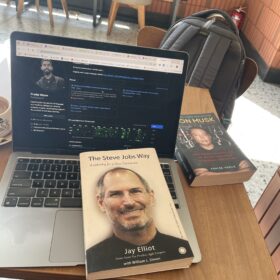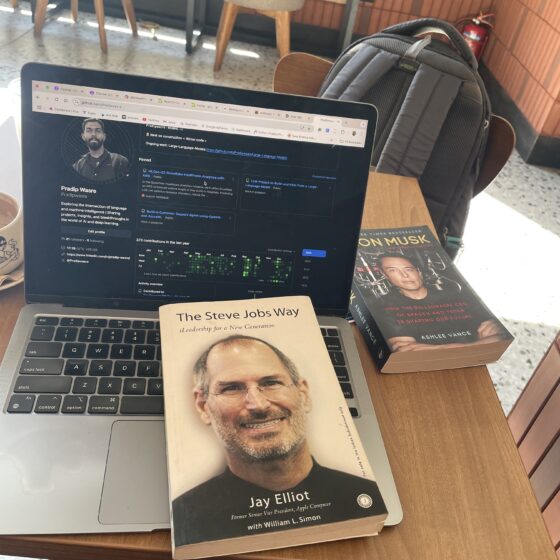W2, Day 1 Blog: Mastering AI APIs, Real-Time Streaming, and Adversarial AI Conversations
Welcome to Week 2 of my journey into the world of LLM engineering! Today, we’re diving into some fascinating areas of AI development, focusing on leveraging multiple APIs, streaming AI responses, and experimenting with adversarial AI conversations. Let’s break this down into three parts and explore the concepts behind them.
1. Mastering Multiple AI APIs: OpenAI, Claude, and Gemini
When it comes to working with AI models, integrating multiple APIs like OpenAI, Claude (by Anthropic), and Gemini (by Google) is critical for building robust applications. Each API offers unique strengths, and understanding how to use them effectively is key to becoming a skilled LLM engineer.
What Was Done Today?
Setting Up API Keys:
To use these APIs, you first need to generate API keys for OpenAI, Anthropic (Claude), and Google (Gemini). Each API requires you to authenticate requests with these keys, which are stored securely in a configuration file like.env.Challenges with API Setup:
While OpenAI and Claude are relatively straightforward to set up, Google APIs can be more complex. They often involve creating a project in Google Cloud Console, setting up OAuth permissions, and enabling APIs. Despite the struggle, these efforts pay off when you see how different models can work together.
Purpose:
The purpose of using multiple APIs is to leverage their specific strengths. For example:
- OpenAI models are known for their creativity and conversational abilities.
- Claude focuses on safety, politeness, and ethical considerations.
- Gemini offers powerful tools for tasks requiring Google’s ecosystem integration.
Mastering these APIs allows developers to build applications that take the best of each model and integrate them seamlessly.
2. Streaming AI Responses: Real-Time Interaction with LLMs
One of the most exciting advancements in LLM engineering is streaming AI responses. Instead of waiting for the entire response to be generated, you can receive the output in small chunks, which creates the illusion of a real-time conversation. This is especially useful for chatbots, live assistants, or any application that requires dynamic interaction.
How Streaming Works:
Streaming leverages the stream=True parameter when making requests to an LLM API. This instructs the model to send back parts of its response as they are generated.
System Messages and Prompts:
Before the AI generates responses, you need to define a system message that sets the tone or behavior of the model. For example:- A system message like “You are an assistant that is great at telling jokes” ensures the AI understands its role.
- The user prompt provides the context or question the user wants the model to address.
Streaming Outputs in Real-Time:
As the AI processes the prompt, it streams the response back in segments. Developers can display these segments immediately, creating a real-time experience for users.
Purpose of Streaming:
The primary benefit is enhancing the user experience. Real-time responses feel more natural, especially in conversational interfaces, and they reduce perceived latency. Additionally, streaming allows developers to update user interfaces dynamically as the AI responds.
3. Adversarial AI Conversations: Pitting Chatbots Against Each Other
One of the most intriguing experiments is creating adversarial conversations between different chatbots. This involves simulating a dialogue between two models with contrasting personalities and behaviors.
Concept Behind Adversarial Conversations:
Chatbots can be designed with different personas or objectives. For example:
- Chatbot 1 (GPT-4o-mini): Argumentative and snarky, it challenges everything said in the conversation.
- Chatbot 2 (Claude-3): Polite and agreeable, it tries to find common ground and calm the other chatbot.
By programming these distinct behaviors into system prompts, developers can observe how the models interact and adapt their responses.
- Message Structure:
Conversations are represented as a sequence of message histories:- System Message: Defines the personality or behavior of the chatbot.
- User Prompt: Represents the input from a human or another chatbot.
- Assistant Response: The chatbot’s reply to the prompt.
This structure enables the simulation of longer interactions with conversational memory.
Parameters and Their Role:
- Temperature: Controls the creativity of the responses. A lower value (e.g., 0.4) makes the AI more deterministic and logical, while a higher value (e.g., 0.7) allows for more varied and creative replies.
- System Prompts: These guide the AI’s behavior. For example, one chatbot is programmed to argue, and the other to agree.
- Max Tokens: Limits the length of the response, ensuring the conversation doesn’t become too lengthy or costly.
Purpose of Adversarial Conversations:
The goal is to explore how AI models can simulate complex interactions, including disagreement, negotiation, and reconciliation. This has practical applications in areas like debate systems, conflict resolution tools, and multi-agent simulations.
Core Takeaways from Day 1
- Working with Multiple APIs:
Understanding how to integrate and manage multiple LLM APIs is critical for building versatile AI applications. Each API has unique strengths, and combining them allows you to create more robust and efficient systems. - Streaming AI Responses:
Real-time interaction with LLMs improves user experience and creates dynamic applications. By streaming outputs, you can reduce latency and provide an engaging conversational interface. - Adversarial Conversations:
Simulating interactions between chatbots with distinct personalities is a fascinating way to test AI behavior. This helps in building applications that require multi-agent collaboration, debate, or role-playing scenarios.
Looking Ahead
Today’s work introduced some exciting tools and concepts that are essential for modern AI applications. As we continue, I’ll explore more advanced topics like fine-tuning LLMs, incorporating external data sources, and building production-ready systems. Stay tuned for more insights and experiments!

